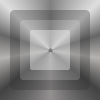http://www.monalisa-au.org/
Monalisa-Audio Unit is an Audio Units* plug-in which bridges the image effects world to the sound effects world and a one of premiere GPU based audio processing software in the world. It wraps Image Units** plug-in as Audio Unit plug-in. With this software, people could use every Image Unit image effects (e.g. motion blur, posterize) as sound effects within Audio Unit host application (e.g. Apple Logic Pro, Apple Garage Band).
Monalisa-Image Unit
Monalisa-Image Unit is an Image Units plug-in which bridges the sound effects world to the image effects world. It wraps Audio Unit plug-in as Image Unit plug-in. With this software, people could use every Audio Unit sound effects (e.g. delay, band pass filter, reverb) as image effects within Image Unit host application (e.g. Apple Motion, Apple Quartz Composer).



